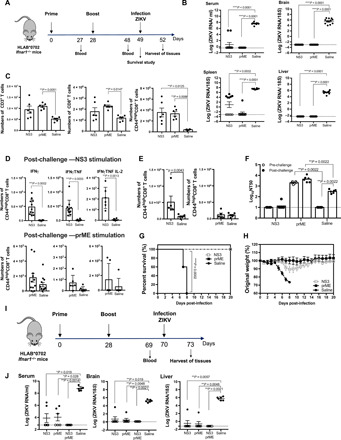Fig. 4. Control of ZIKV infection in HLA-B*0702 mice by NS3 and prM-E vaccines.

(A) HLA-B*0702 Ifnar1−/− mice were intramuscularly injected with 10 μg of NS3 or prM-E vaccines or with saline and boosted on day 28. (B) Quantitative reverse transcription polymerase chain reaction (qRT-PCR) analysis of ZIKV RNA levels in the serum, brain, spleen, and liver of vaccinated mice with NS3 or prM-E (n = 11) or saline (n = 12) on day 52. (C) Number of CD3+, CD8+, CD44highCD8+ T cells and (D) CD44highCD8+ T cells producing IFNγ, IFNγ/TNF, or IFNγ/TNF/IL-2 or (E) granzyme B were reported. (F) Neutralizing activity (NT50) against ZIKV SD001 on days 49 (pre-challenge) and 52 (post-challenge). On day 49, vaccinated mice (NS3, n = 6; prM-E, n = 6; saline, n = 5) were lethally challenged retro-orbitally and survival (G) and weight loss (H) were monitored. (I) HLA-B*0702 Ifnar1−/− mice were intramuscularly immunized with 20 μg of NS3, prM-E (n = 6), or NS3 + prM-E (n = 5) vaccines or with saline (n = 6) as represented. (J) qRT-PCR analysis of ZIKV RNA levels in the serum, brain, and liver after infection (day 73). Data are presented as the mean or mean ± SEM from two independent experiments. The nonparametric Kruskal-Wallis and Mann-Whitney tests were used to compare more than two groups (B, C, F, and J) or two groups (D and E), and the Gehan-Breslow-Wilcoxon test was used to compare survival data (G).
